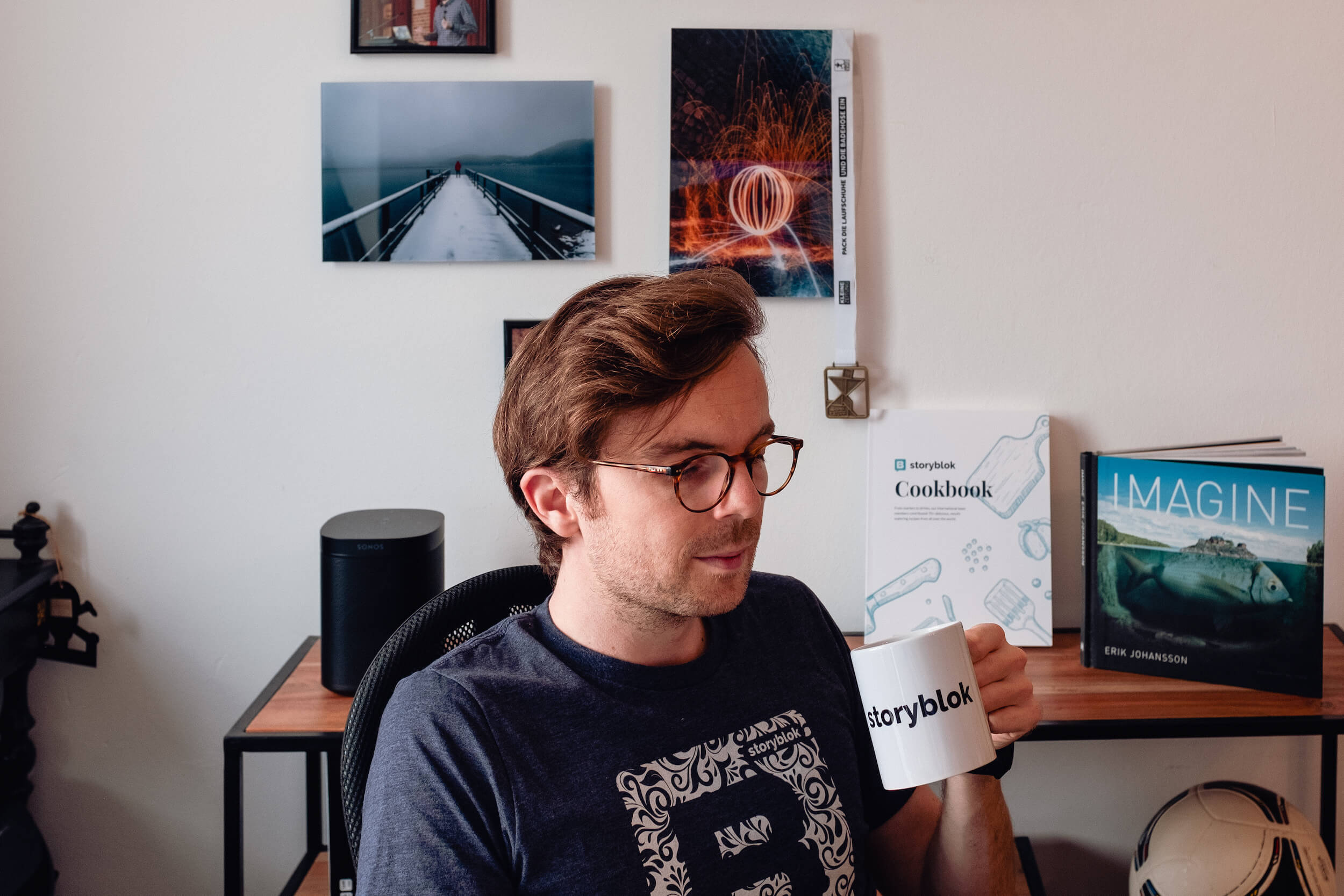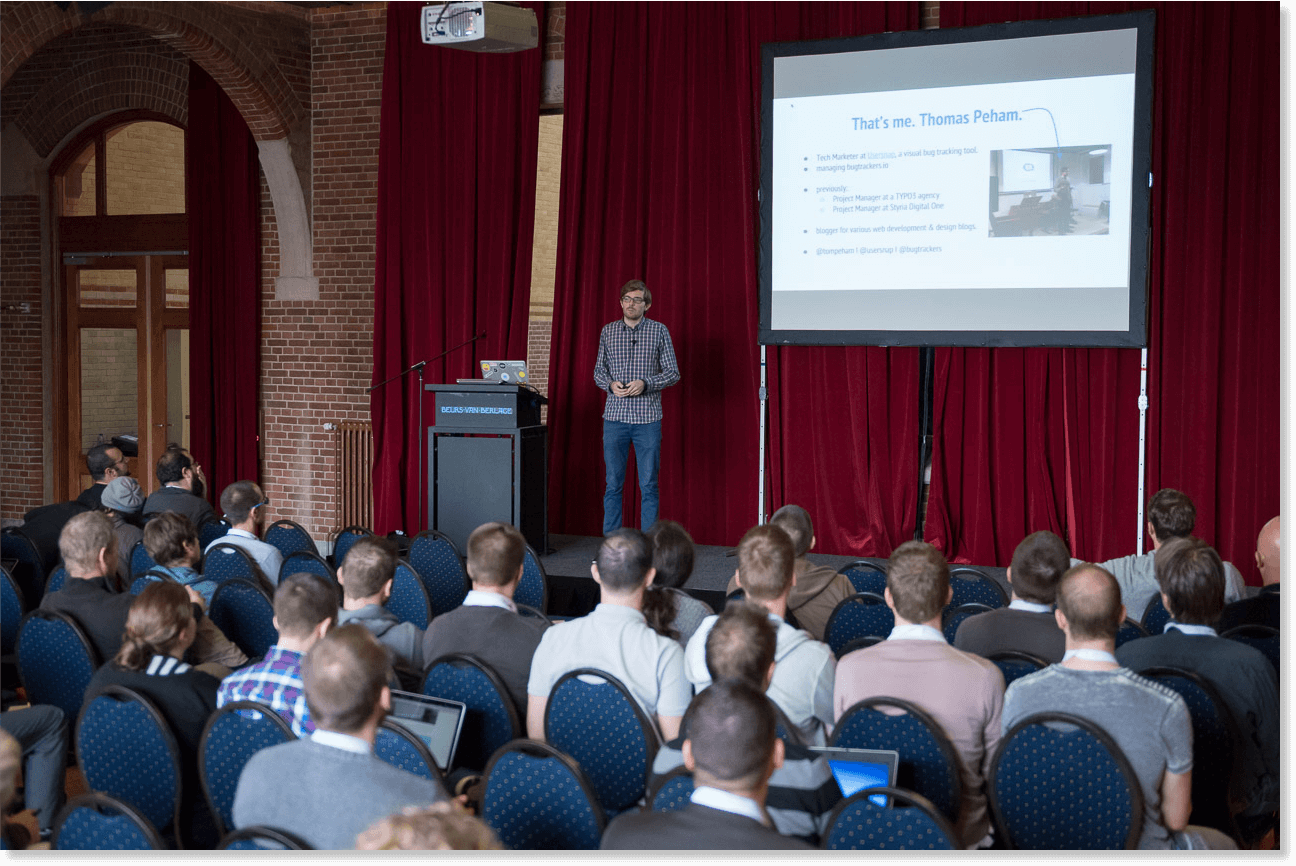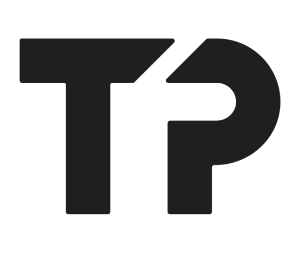PSA: Why I'm joining Storyblok to build digital experiences of the future

TL;DR: I'm joining Storyblok as VP of Marketing. Storyblok is a headless CMS that allows marketers, editors, and developers to build better websites (and other digital experiences) faster.
Gartner predicts that by 2025, 80% of all digital experience would run on a headless system. If you're like, "What is headless" => go check out this article.
Make sure to follow our CMS journey at Storyblok. The easiest way to do that? Go follow Storyblok's Linkedin Page and Twitter account. We also start a pretty cool newsletter soon. Want on the exclusive list? Hit me up. I'll be forever grateful.
——
Here's my story and how it all started 15 years ago.
I remember sitting in the computer lab at my high school. I think it was around the age of 15 or 16, and it must have been around 2005. Our teacher tasked us to build our first website. It was totally up to us what to make and what to do with our newly learned HTML and CSS knowledge.
If I remember correctly, I built some HTML pages listing the Austrian soccer clubs, divided into league 1 and league 2.
It was just a fun project.
Fast forward 3,5 years.
From HTML to Joomla
I'm sitting in the cafeteria of the university where I'm studying business administration. As a fun side project, I just finished the first official website that I've built for someone else. Our local fire brigade asked me if I can help them build a website. And while I didn't have any experience back then, I thought it was a fun project, as they gave me full creative freedom.
While a student colleague watched me build this site, she asked me if I also want to develop the website for the company she's working for. I also said yes.
Not only because it was the first time that someone paid me to build their website, but most importantly because I took the chance to build the website with Joomla, one of the best known CMS back then.
I don't remember precisely when Joomla came onto my radar. However, I found it fascinating that an entire content management system with a frontend, an admin interface, and the backend could do.
I was spending my nights building this company website with Joomla. And while I wouldn't consider myself a designer or developer, I was pretty proud to finish my first paid website (that later went on to run for a few years).
From Joomla to TYPO3
Fast forward to 2010.
I just finished my Bachelor's business studies in June 2010 and started my first full-time job in an agency.
Interestingly, this agency ran all their clients' websites on TYPO3, a content management system, pretty well-known in the central European area. I wasn't familiar with the system initially. Still, as a project manager and consultant, I got involved in many website relaunches and projects - from small local businesses to big enterprises — over the new few years.
One of the most significant TYPO3 projects I was managing was for a big industrial company from Austria that relaunched their websites (amongst other things) for their upcoming IPO.
About WordPress
At that time (2011), I started my blog thomas-peham.com (for which I even got nominated for a tech blogger award later in 2015). And as I was quite curious about WordPress at the time, I decided to give it a try.
WordPress felt like the perfect blogging platform for my needs. It is much light-weighter and simpler than TYPO3, Joomla, or any other CMS back then. WordPress was also great as it was fully focused on publishing articles/posts.
Over the next few years, I became more and more invested in WordPress as I built more than 12 WordPress websites (for friends, family, and just for fun).
As a non-developer, WordPress clicked for me. With drag&drop options, I would install a WordPress instance in 5 to 10 minutes (I guess we all have read the famous 5 min installation).
WordPress was and still is great, especially for solo hackers, freelancers, or small businesses. Up to this day, I'd recommend it to any person (that is not a developer) who is just getting started and needs a simple site. Especially since many of those people usually choose between WordPress or Wix.com, Squarespace, or any similar Do-it-yourself builder. Please go with WordPress.
But you know what? WordPress isn't that great if you have a range of content editors, development teams, and marketers working on one global instance. Over the last few years, I've seen the following drawbacks of WordPress in company environments:
-
No staging system: This isn't necessarily WordPress's fault, but usually, companies who use WordPress don't have a proper, seamless staging environment.
-
Content Workflows: WordPress works page-based, meaning: You can create new pages, and once published, you can update them. But the thing is that WordPress doesn't offer workflows among teams. Imagine, for example, a marketer who wants to update an existing product page. He can choose between the following options: Duplicating the live page and leaving that as a draft as long as the page is not fully live. Or she goes directly into the live page and updates the content on the fly (definitely not great for teams that have feedback loops).
-
Themes, plugins, extensions: Developers are usually not happy with WordPress. And there's a good reason for that. PHP and the overload that comes with it is one reason. Many corporate websites heavily rely on third-party plugins, themes, and other stuff that adds (sometimes unnecessary complexity). All these things heavily influence page performance, which makes it even more tricky. I've seen development teams who spent probably more time optimizing these third party code than the time it would have taken them to develop a custom solution.
-
WordPress is still a monolithic system, meaning: Frontend, backend, everything is heavily interfering with each other. Updates on one end influence the other end.
-
Updates & Hosting: Usually, small businesses (and even larger ones) don't have the resources and know-how to update and host their WordPress systems. This makes maintenance (for marketers like me) sometimes quite painful. And most importantly, it also probably influences your page performance (=SEO) quite a bit.
- Multi-lingual websites: What I find quite fascinating is the fact that WordPress does not support multi-lingual websites by default. Yes, the world's largest CMS does not support multiple languages but requires you to use additional plugins.
Don't get me wrong; WordPress is great. I still use it and run multiple smaller projects on it. But here's the thing: It's not the BEST solution for EVERY single use case.
Speaking at the Global TYPO3 conference in Amsterdam
Just a quick switch back to TYPO3. So, between 2010 - 2014 I was working with TYPO3 daily in our agency. Most from a content editor perspective and first-level support if customers of mine have questions or issues.
But even after I left my agency job, TYPO3 followed me in my business life. During my tenure at Usersnap, we've been developing a user feedback solution for various systems; one of them has been for TYPO3. And that's somehow how I ended up submitting my first call for paper to speak at the global T3CON in 2015.
It was my first call for paper ever; I was 26 years old with zero speaking references and not much involved in the TYPO3 community. I didn't expect much. But you know what? My talk was accepted, and so it happened that I was traveling to Amsterdam in 2015 talking about the "Do's and Don'ts of Bug Reporting" at the global TYPO3 conference.

Pretty exciting. And to be honest: I was extremely nervous before my talk. I barely slept the night before.
I arrived at the venue early, as I wanted to get a feel for the conference, the attendees, and the topics. And to my surprise, I found an open, super-friendly community of curious people who wanted to learn and exchange ideas. As a marketer, I've been to conferences before, usually marketing conferences, where there are lots of egos to be seen and sales to be made.
But T3CON was different. Some would call it a nerdy bunch of people, I'd call it inclusive people where I immediately felt welcome. With that in mind, my talk went pretty smoothly, and I was happy that there were quite a few people interested in the topic and the talk.
Anyway: My main learning here has been that the CMS community is an open, inclusive, and friendly space. And while I wasn't following TYPO3 afterward that intensively, I got a much better understanding of the role of community work.
Custom made CMS & Static Site Generators
From Joomla to TYPO3 to WordPress. I thought I've seen it all. But then, an interesting new trend emerged that can be summarised as static site generators.
In 2015/2016, we decided to relaunch our website (that was our main revenue source) with Hugo, a static site generator. I wrote about the process and setup quite extensively here in this sitepoint article.
Netlify, version control and many other advantages developers love
Now, looking back, it's funny how a static site generator solved many problems for us that WordPress wasn't able to do properly.
-
Performance: One of the most significant benefits of having a static site is definitely speed & website performance. Static websites are incredibly fast, especially when compared to sites that carry all the burden of a heavy-weight content management system.
- Flexibility: Static web pages give you 100% control over your content and web design. If you're planning on producing various landing pages with different techniques, it especially makes sense to consider a static site generator and not a CMS like WordPress.
But you know what. There's been one HUGE drawback from day one.
No UI for non-techies
When creating, managing, and publishing content with a static site generator, you (as a content editor) work inside a text editor, you work with markdown, and then you need to understand version control and how to create pull requests using GitHub (or any other git system). To publish new posts or files, you need to re-generate the web page and deploy it to a server.
If you're a marketer without zero tech knowledge, this is a huge issue. In my work experience, I've heard statements both from marketing deciders and marketers themselves along the lines of:
"One must need a rocket-science degree to edit even simple things on our websites"
or
"Why is there no visual interface!?"
I've seen situations where developers ended up being the content editors because no one in marketing could even edit the most straightforward things on their website.
You don't want your developers to become content editors. And usually, they are not that happy either.
A future-proof CMS that works for all
While I thought I'd seen it all, I first met Dominik and Alex around summer 2019 as they were building up the team, and I was running my freelance business. This is how I learned about headless CMS and how it solves typical challenges for developers & marketers alike. Fast forward to September 2020, I started to work with Dominik and the Storyblok team on a freelance basis.
What I found at Storyblok was a high talent-density, a motivated all-remote team, a uniquely positioned product that customers love, and a growing business.
With that, I couldn't ignore the offer to join full-time, and I'm extremely excited about what's ahead of us.
Looking back at my journey so far, it's always easy to see the dots connecting different life stages. Therefore, it's no real surprise to me to look back and see the CMS topic following me everywhere I went.
But you know, the real reason I'm super excited about joining Storyblok on this next CMS wave has a much simpler yet more personal reason.
It's all about creativity. I believe that a system like Storyblok can give people (and companies) control and, most importantly, the creativity to build great websites, campaigns, apps, or any other digital experience.
Thanks for reading.
What's next? Make sure to follow our CMS journey at Storyblok. The easiest way to do that? Go follow Storyblok's Twitter account and Linkedin Page. We also start a pretty cool newsletter soon. Want on the exclusive list? Hit me up. I'll be forever grateful.
PS Wow, you've made it to the end. Thank you for reading and for being with me.
Full disclosure: My website does not run on Storyblok yet. I'm currently relaunching it. Stay tuned for the next updates :)
